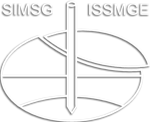Soil Liquefaction Mitigation by Applying the DSM Technique Below the Foundations of a Silo Base
Soil Liquefaction Mitigation by Applying the DSM Technique Below the Foundations of a Silo Base
This paper presents a conceptual approach for mitigating soil liquefaction by applying the deep soil mixing (DSM) technique beneath the shallow foundations of a silo base slated for future construction in Varna, Bulgaria. Preliminary analyses of the site's seismic, geological, and hydrogeological conditions indicate that the water table is near the ground level and some zones are prone to liquefaction, with an anticipated surface settlement of 20 to 30 cm during a major seismic event. Additionally, a saturated layer of backfill, which requires removal during construction, exists on the site. To address both issues simultaneously, a 6 by 6 m grid of DSM containment cells (with a chosen diameter for overlapping DSM columns of 900 mm) has been proposed. For economic reasons, the suggested improvement depth does not extend to a non-liquefiable layer but is still expected to ensure acceptable performance by reducing settlement. The paper aims to offer a new perspective on a relatively well-known soil liquefaction mitigation measure, taking additional advantage by eliminating the need for a dewatering system, thereby achieving a technological and economic balance in the project.
N. Y. Milev
28th European Young Geotechnical Engineers Conference (EYGEC2024)
Keynote Papers
